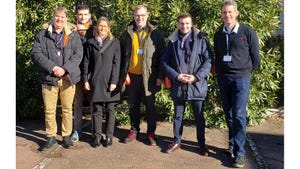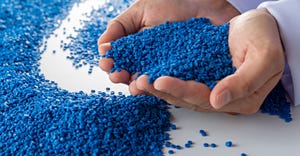CIM conversion sheds light on broadband nets
April 1, 2001
The market for broadband communications is booming. For voice, data, e-mail, video, and things yet to come, many miles of fiber-optic cable are being installed daily all around the globe. PIM is helping to connect it all.
Given that fiber-optic cable is generally thinner than a human hair and that it's almost exclusively made of glass for its signal transmission properties, an interesting combination of power and fragility is created. To fully use this power, bundles of fragile fibers must be precisely connected and spliced to ensure optimum transmission and avoid signal degradation. The slightest loss or seepage of light can radically damage the transmission.
Ferrules are used on the ends of cables at the connection points (Figure 1). Until recently, the ferrules had been produced by extruding ceramic materials that were then cut to length. The machining of holes and tapering were done using diamond tools. This ensured concentricity as well as the high degree of precision required in the center hole for the optical fiber.
Enter PIM, or to be precise, CIM. The easy part was eliminating most of the secondary grinding and drilling. Shaping of the ferrules happens in the mold. Grinding time is three to four times less than before. The center hole, or core, still needs to be precisely drilled to perfectly accommodate the thin glass fiber. The core diameter is about 167 µm (.167 mm) with a tolerance of ±1 µm. Concentricity tolerance cannot exceed ±15 µm on ferrules with a 2.5-mm OD.
The Right System
It took real supplier teamwork to meet such imposing demands. The four-cavity mold, which has a core length of 2.5 cm, is made by Junghans Feinwerktechnik of Schramberg, Germany. The material, supplied by Inmatec of Rheinbach, Germany, is a specially formulated zirconium oxide with a grain size of less than 250 µm. Production technology from Arburg (Lossburg, Germany) consists of an integrated production cell based on its Allrounder 320 C machine and one of the company's Multilift H robots. Inmatec has full responsibility for the project and therefore supplied the complete installation.
The manufacturing system includes an extended machine guard that houses the entire handling system and palletizing station (Figure 2). An additional b-axis swivels the entire gripper arm 90° around the vertical to reduce machine width, and a servoelectrically driven z-axis runs horizontally at right angles to the long axis of the molding machine.
The mold is designed so that the gate supplying the four cavities is sheared off with the travel of the mold, while ejection movement is accomplished by the core pull. After molding, the green bodies are stacked vertically in burning boxes in a system that allows the production cell to run independently for 6 to 8 hours. To injection mold the ultrafine material, a relatively high proportion of binder is needed. Resulting part shrinkage can be 22 percent following debinding and sintering.
Arburg notes that accurate ramp travel movements are a critical factor in producing such high-precision parts. To minimize wear and related maintenance, Arburg uses hardened metal for the cylinder, plasticating screw, and nonreturn valve.
The net result is a manufacturing solution that produces significant time and cost savings over the previous method of extrusion.
You May Also Like


